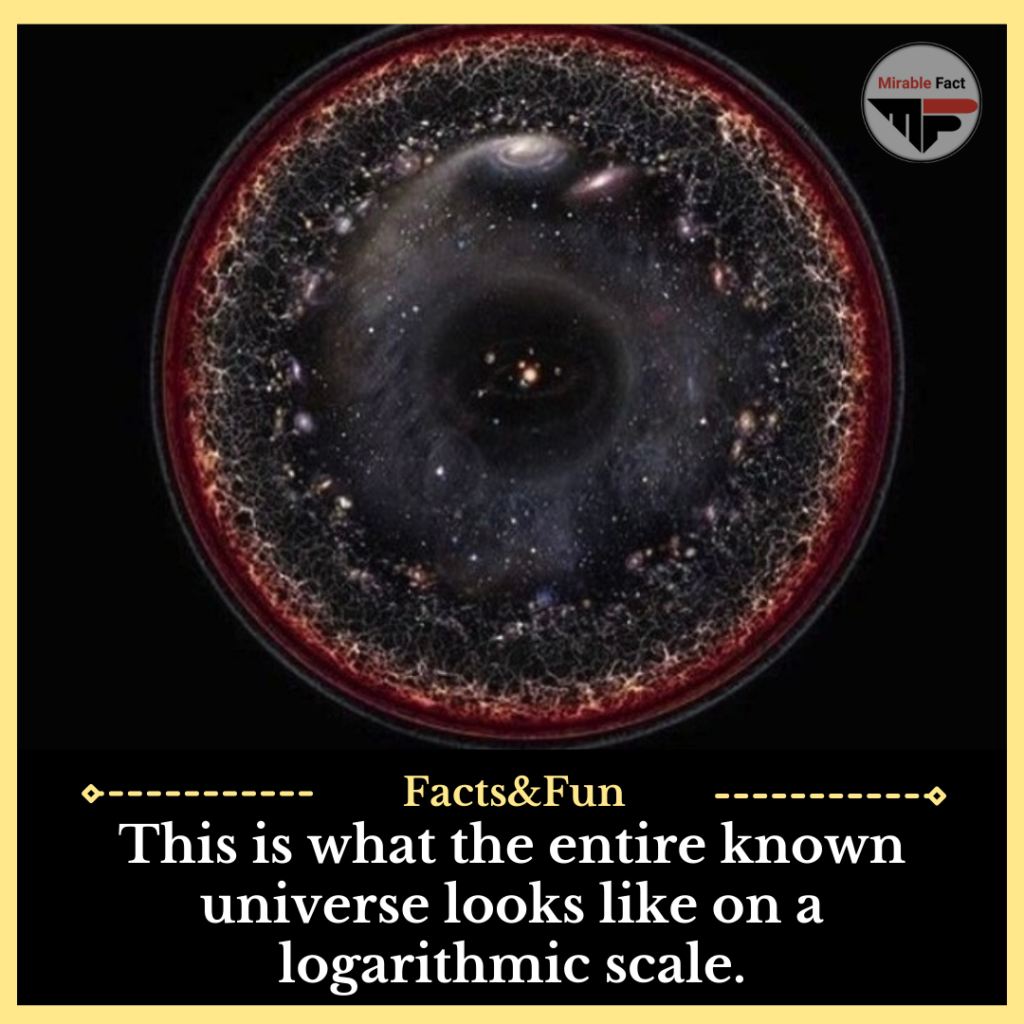
Logarithm: We all all aware of the unlimited size of an universe. It’s inconceivable. It is completely illogical to suppose that one could condense everything into a single image.
But one musician , that right , a musician, was able to do just that. Wow is not even close to capturing how we are feeling right now!
By fusing NASA photographs of the observable world with logarithmic universe maps from Princeton University, musician Pablo Carlos Budassi was able to accomplish the unfathomable.
The observable universe is depicted as a single disc in the figure below, which was developed by Budassi.
How does this Map work?
Before getting started , it’s important to go over a few important aspects of the map.
First of all, it’s crucial to understand that the celestial object depicted in this map are not scaled. Nearly all of the objects would be tiny dots if t were made to scale with how we would observe them from earth (except the Moon, the Sun, and some nebulae and galaxies).
In order to fit all the data, each object’s distance from the earth is calculated on an exponentially increasing logarithmic scale.
The scale of the map covers astronomical units (AU), or roughly the separation between the Earth and the Sun, within our Solar System.
The distance increases further. reaching millions of parsecs, each of which is equivalent to 3.26 light-years or 206,000 AU.

What is Logarithm scale?
At first impression, the image seems intimidating, so allow me to explain it. Our Sun and solar system can be seen in the image’s centre. Our Milky Way galaxy is located in the immediate outer ring of the centre.
Farther out are more remnants of the great Bang, other cosmic matter, and nearby galaxies like Andromeda. Plasma left over from the first Big Bang is located at the ring’s very outermost region.
How does Budassi cram the entire cosmos into a single circle? It is conceivable to cram the full view of the universe into a small area by using a logarithmic scale to account for the enormous distances separating significant heavenly bodies.
Every distance you travel in any direction from the centre, where we are, shouldn’t be measured in a linear scale because it wouldn’t be accurate. This image only makes sense when viewed in logarithmic scale, and Budassi is entirely to blame for it.
Doesn’t the entire picture appear to be contained within a marble? Beautiful beyond words!






















































































































































































































































































































































































































































































































































































































































































































































































